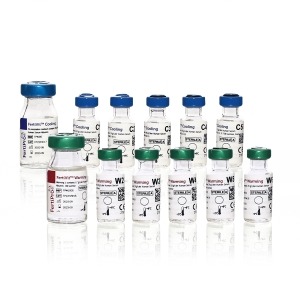Frequently Asked Questions: FertiVitTM
FAQ1: What is the difference with VitriFreeze (ES)™ / VitriThaw (ES)™?
FertiVit™ can also be used to vitrify and warm oocytes.
FertiVit™ is HTF-based (VitriFreeze (ES)™ / VitriThaw (ES)™ is PBS-based)
FertiVit™ contains 6 vials for cooling and 6 vials for warming
FAQ2: Is pre-incubation necessary?
All media can be used at room temperature. Alternatively, Warming 1 can be warmed to 37°C.
FAQ3: Why does the kit contain so many steps?
There are several reasons:
- A strong reduction of inter-operator variability (no need to mix droplets)
- To reduce stress for the oocyte:
An oocyte has to endure a lot of chemical and mechanical osmotic stresses during a vitrification process. These stresses can lead to cytoplasmic insufficiencies which in turn are the main cause of poor competence of vitrified oocytes in terms of fertilization and early embryonic development.The more drastically cryoprotectant solutions are added, the more the oocyte will suffer from mechanical stress (intense shrinkage, excessive flowrate of water/cryoprotectants). This can be lethal for oocytes or impair their functionality. Using FertiVit™ is beneficial because the many steps in the protocol ensure a very smooth and controlled addition of cryoprotectants to the oocyte, herewith increasing the survival rate and potential of the vitrified oocytes.
A higher number of equilibration steps also increases the rate of cryosurvival of germinal vesicles. The same is true for warming: removal of cryoprotectants has to be done with precaution because the membrane is weaker and the component in the cytoplasm necessary for water exchange is not fully recovered yet. Therefore, for optimal results, smooth addition and removal of cryoprotectants is beneficial.
FAQ4: Can FertiVit™ be used for open/non-aseptic vitrification systems?
We strongly recommend closed vitrification systems to guarantee maximum safety for the patients.

